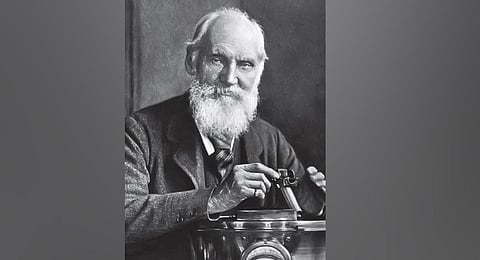

Over an illustrious career spanning decades, William Thomson, the 1st Baron Kelvin, made tremendous contributions to the mathematical analysis of electricity, and formulation of the first and second laws of thermodynamics, thus aiding the unification of physics, a discipline in its infancy as a major academic discipline in the 19th century.
William was born on June 26, 1824, in Belfast to James Thomson, a teacher of mathematics and engineering. Lord Kelvin, as William would later be famously known, took a flair for science and mathematics early in life. He went on to become the Professor of Natural Philosophy at the University of Glasgow, a position he held for 53 years, during which he carried out significant research in physics and electricity. Kelvin made an early physics-based estimation of the Earth’s age.
Given his work on the figure of the Earth and his interest in heat conduction, he also chose to investigate the Earth’s cooling and to make historical inferences about the planet’s age from his calculations. Kelvin worked closely with mathematics professor Hugh Blackburn, while also experiencing work as an electric telegraph engineer and inventor. For his work on the transatlantic telegraph project, he was knighted in 1866 by Queen Victoria, becoming Sir William Thomson.
He had extensive maritime interests too, working on the mariner’s compass. However, the greatest achievement of Lord Kelvin today is his invention of the international system of absolute temperature that bears his name. Absolute temperatures are stated in units of ‘kelvin’ in his honour. In 1848, Kelvin became interested in the idea of “infinite cold” and made attempts to calculate it.
In 1848, he published a paper, ‘On an Absolute Thermometric Scale’, which stated that this ‘absolute zero’ was, in fact, -273 degrees Celsius. According to it, while the existence of the coldest possible temperature, absolute zero, was known before his work, Kelvin determined its correct value as approximately −273.15 degrees Celsius or −459.67 degrees Fahrenheit. The Joule-Thomson effect is also named in his honour. Meanwhile, kinematics, atmospheric electricity, vortex theory of storm, and electrical standards, are a few other contributions of one of the greatest physicists of the 19th century, who passed away on December 17, 1907.